In the beginning of October, I decided to take a short break to visit my family in Armenia as well as to visit the Granshan non-latin type conference which this year took place in Yerevan. But, upon arrival in sunny Armenia, I've discovered that the Printing Museum in Yerevan just got open and hurried there in the first place.
The museum is located in the building of the National Library of Armenia (Teryan street, 72) and the Library had already expressed the idea of establishing this museum back in 2012, when Armenia was celebrating the 500th anniversary of Armenian printing & UNESCO named Yerevan as World Book Capital. But it was finally opened for public just recently, on 25th of September 2017.
The six exhibition halls cover the period from pre-printing to modern printing. But only the largest hall introduces the history of printing in Armenia itself.
Centers of Armenian printing (click to enlarge)
The hall called 'Diaspora of Armenian printing' provides information about the major centers of Armenian printing and publishing, from European countries, Transcaucasia to India. After the invention of Johannes Gutenberg, Armenians from throughout the diaspora began to publish Armenian-language books. There is an interactieve map where you can browse through the world map, look up for publications executed by particular printer or scholar and navigate through timeline to follow the global spread of Armenian book printing. While browsing through interactive map you would notice that the majority of books in Armenian language were printed primarily outside the country.
The first book which had Armenian letters was published in Mainz (Germany) in 1486. But the first book to be published in Armenian language was Urbatagirk—Book of Friday prayers—which was published by Hakob Meghapart in Venice in 1512. The museum has a copy of “Urbatagirk” on display as well as the first Armenian Bible, printed in 1666 in Amsterdam and the first Armenian periodical “Azdarar”, printed in Madras (1794-96).
Urbatagirk—Book of Friday prayers—which was published by Hakob Meghapart in Venice in 1512
As it is impossible to write about every object displayed in the museum, while they all truly deserve to be mentioned, I decided to pick out a few items from the collection.
Azdarar, printed in Madras (1794-96)
The first Armenian periodical - Azdarar (Monitor), mainly covering popular-scientific and social-literary subjects, issued in Madras in 1794 under the editorship of Harutyun Shmavonian, was short-lived and had only 18 issues. The main language of this monthly publication was Grabar (Classical Armenian) with some text in Ashkharhabar (New Armenian) which was used for the news and announcements. It is also first non-English newspaper to be published in India.
(Azdarar has resumed in 2007, in Kolkata (Calcutta), India, after 210 years of the cessation of the original publication, as an initiative of Armenian-American astrophysicist Nora Andreasyan-Tomas. Now it is a color magazine of average of 40 colour pages.)
One of the treasures of the museum is the oldest map which has been published in Amsterdam and dates back to 1695. The level of the details is exquisite.

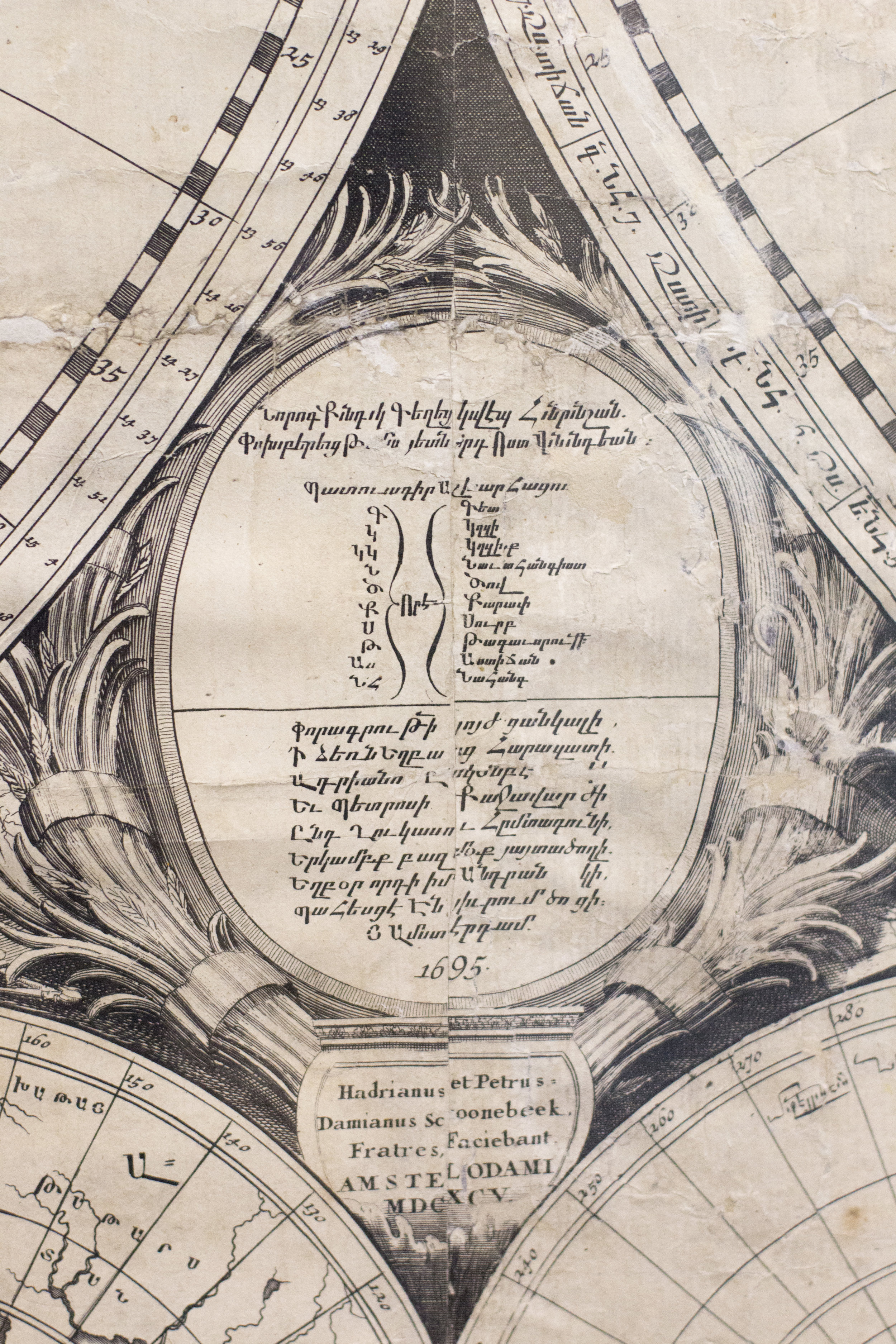
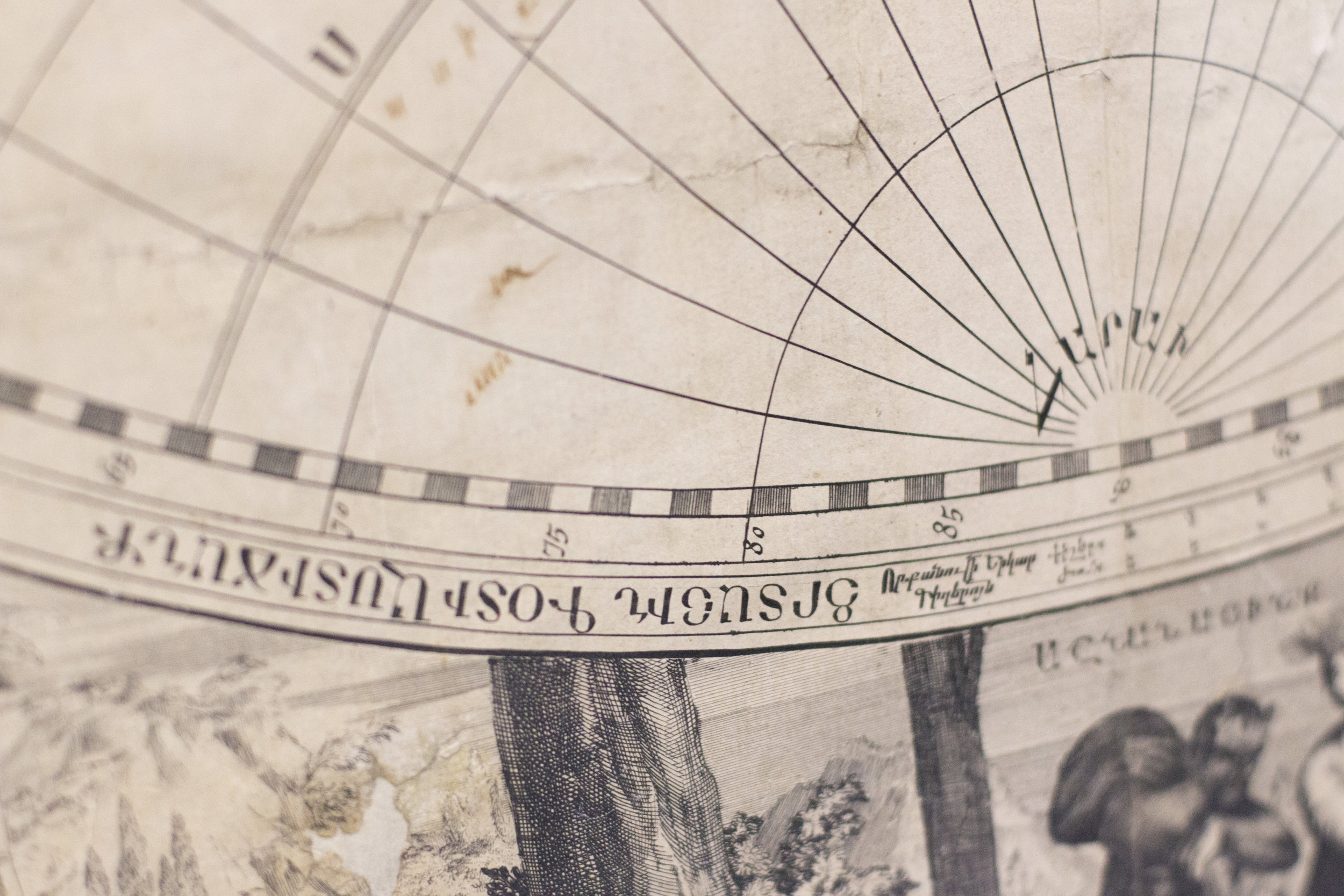

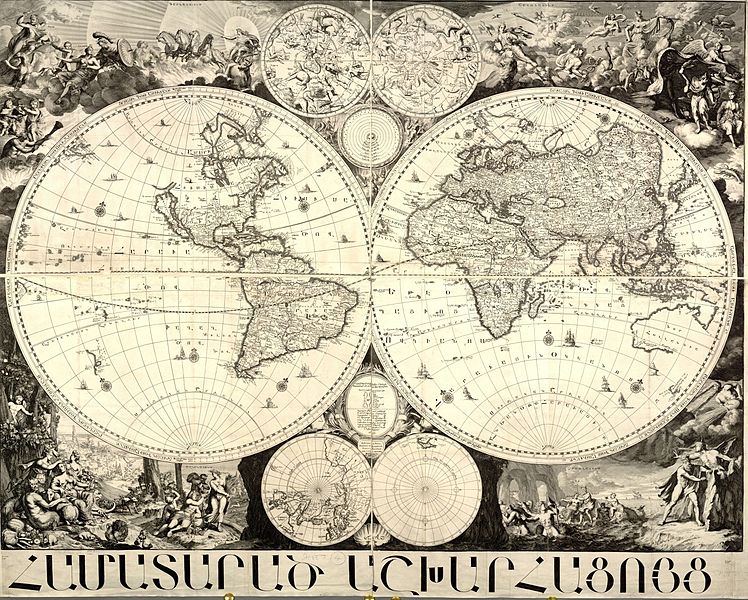
The first printed Armenian map, the “Large World Map (the two hemispheres)”, was issued in 1695 in Amsterdam. The map was compiled by Matteos (Matthew) Hovhannisian, Tovmas (Thomas) Bishop, and brothers Ghukas and Mikayel (Michael) Nurijanyan who also wrote the Armenian inscriptions. The map was engraved on copper plate by brothers Adrianus and Peter Schoenbeck. This map considerably differs from the hemisphere maps of nowadays. There was no notion of eastern and western hemispheres back then. The division of the meridians ranged from the prime meridian to 360 degrees. The map depicted the world as it was known back then, with the unexplored parts including the East Coast of North America, Western Asia, Australia, New Zealand and a part of Greenland. European countries were depicted with considerable preciseness. Particularly noteworthy is the Armenian transliteration of the geographic names on the map. The map is a perfect sample of merging science and art. The depiction of the four seasons of the year with scenes from Ancient Greek mythology beyond the scope of the hemispheres were characteristic of the Renaissance art. The “Large World Map” presents the geocentric model of cosmic knowledge in pre-Copernican era, portrayed in the form of circular orbits between the two hemispheres with the Sun presented as fourth planet.
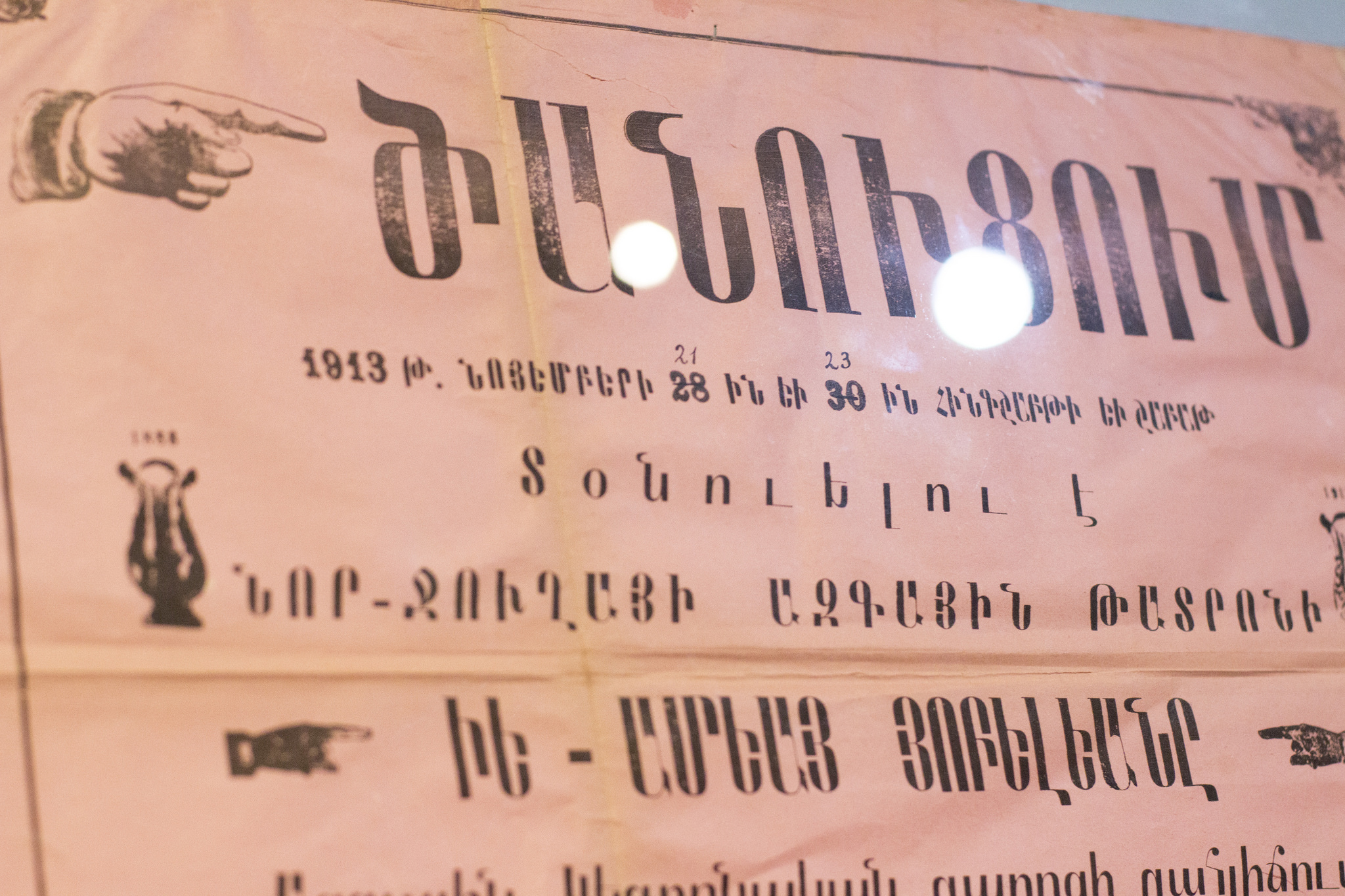
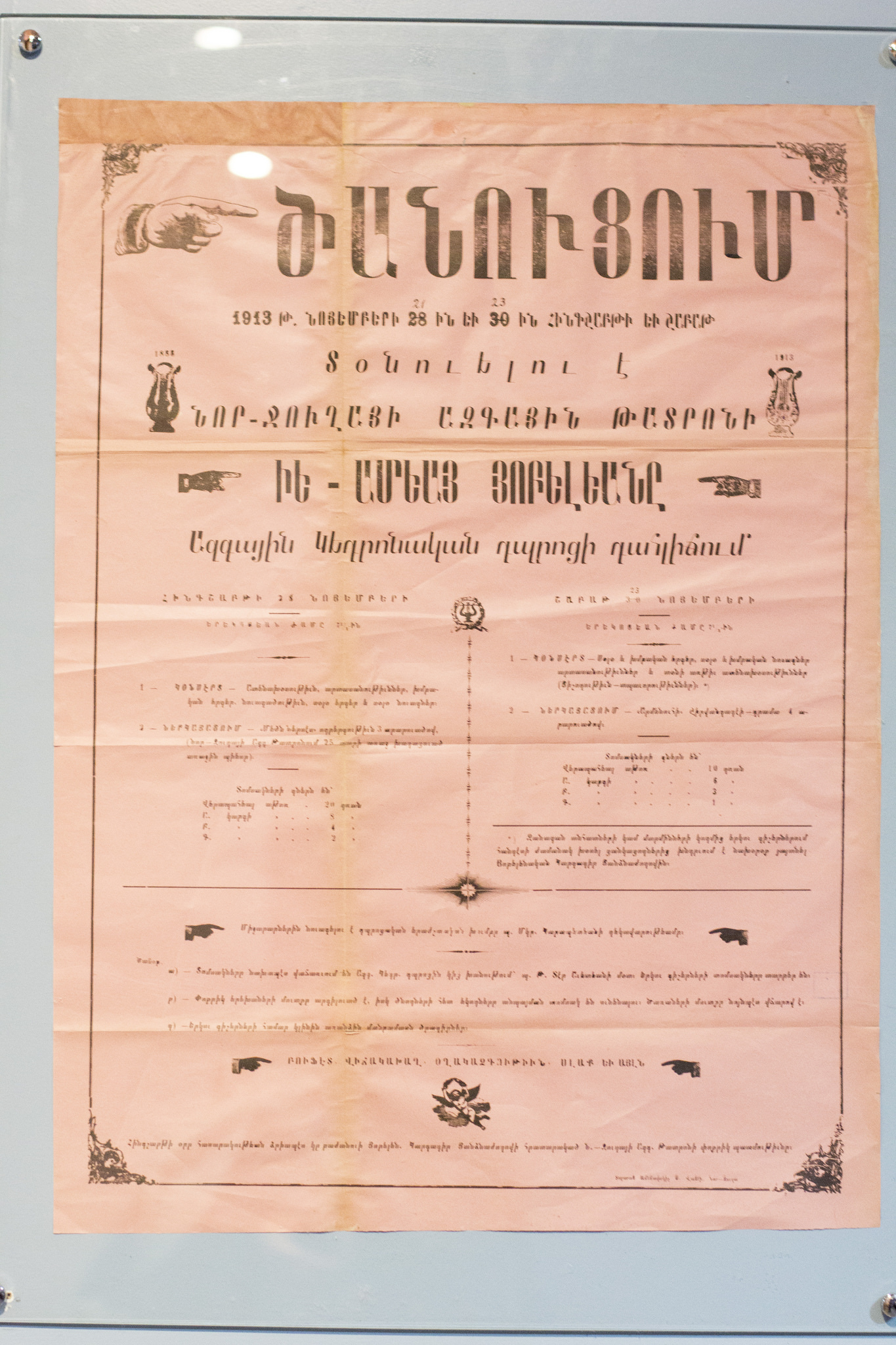
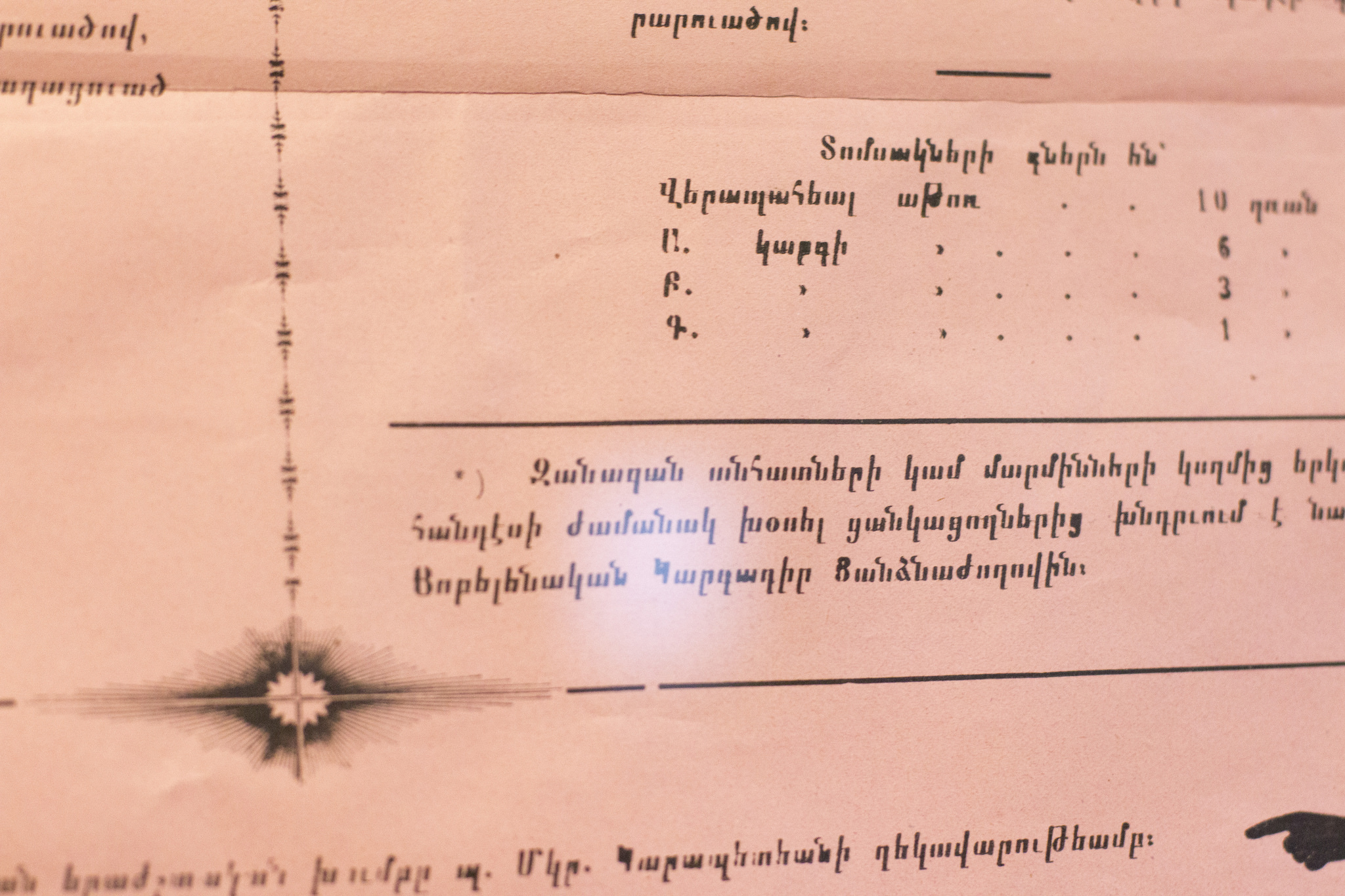

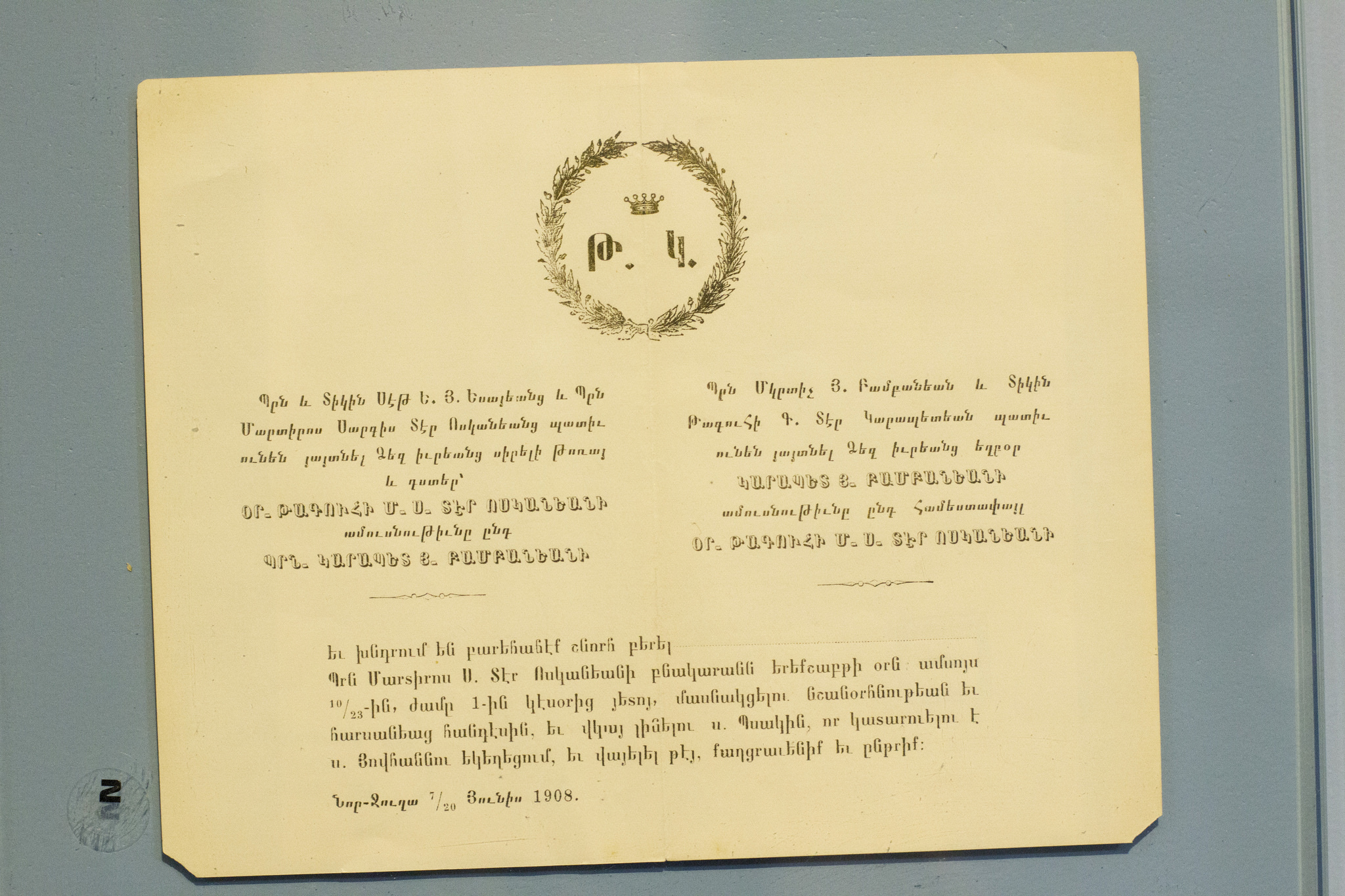

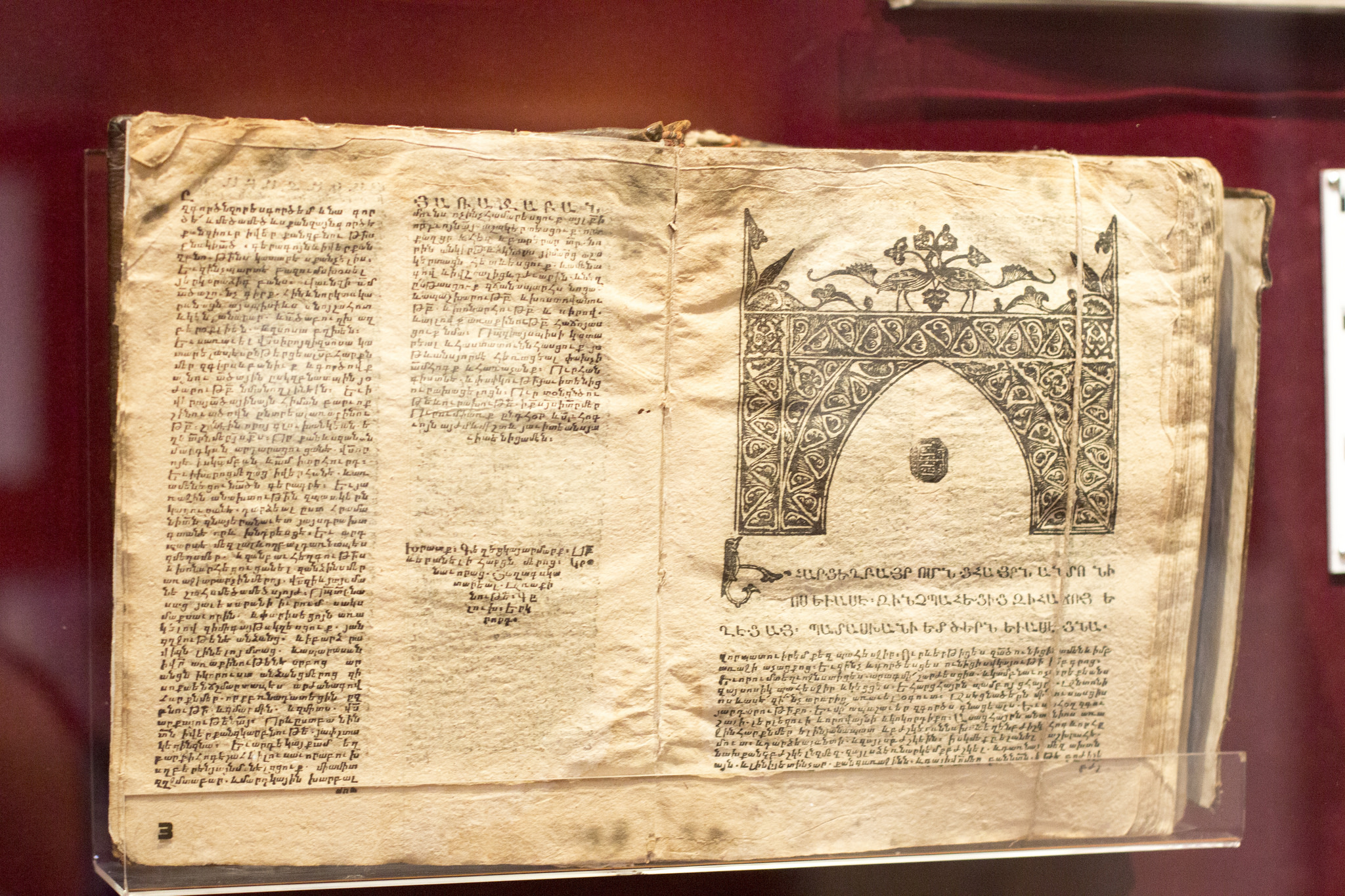
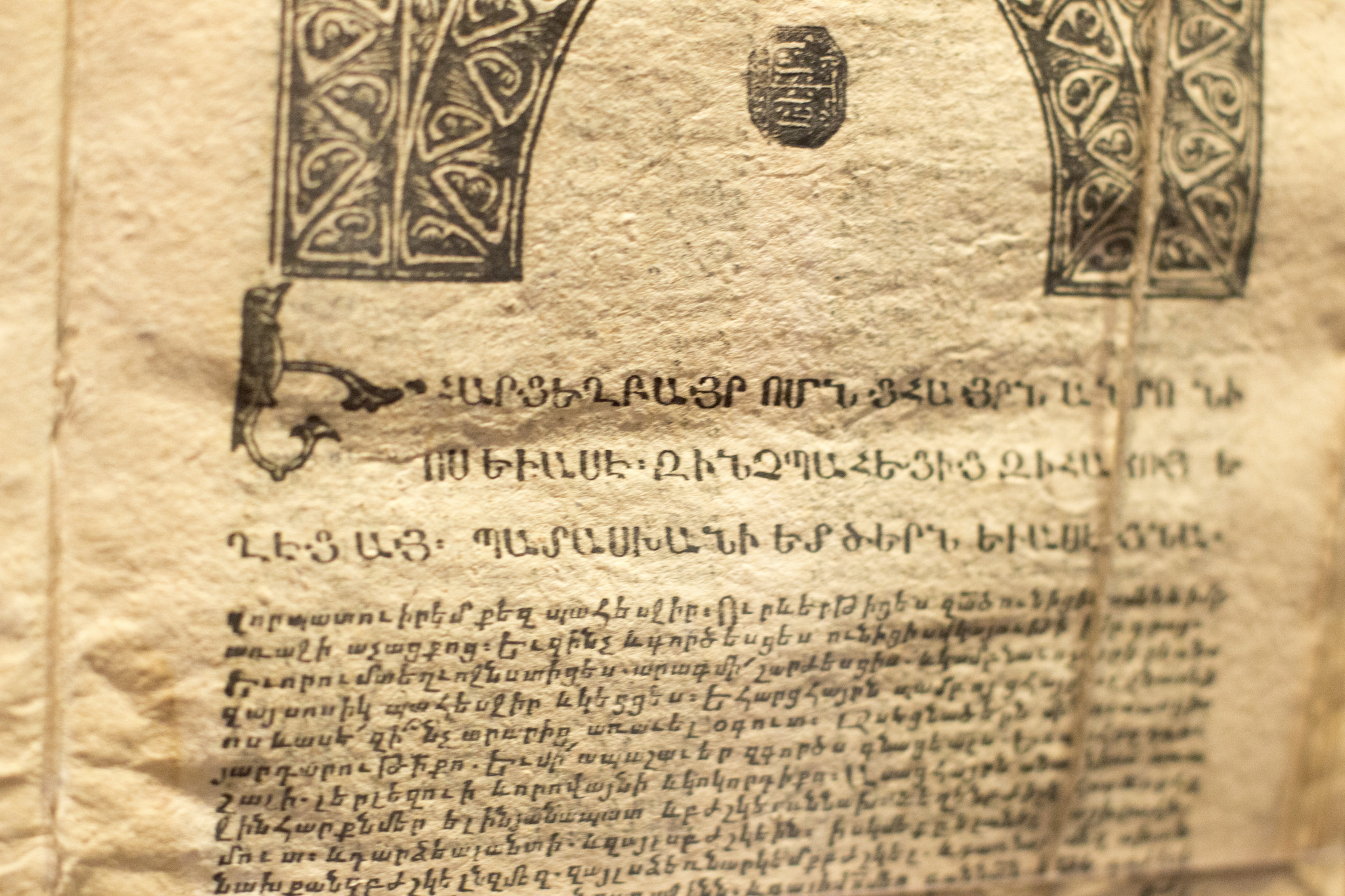
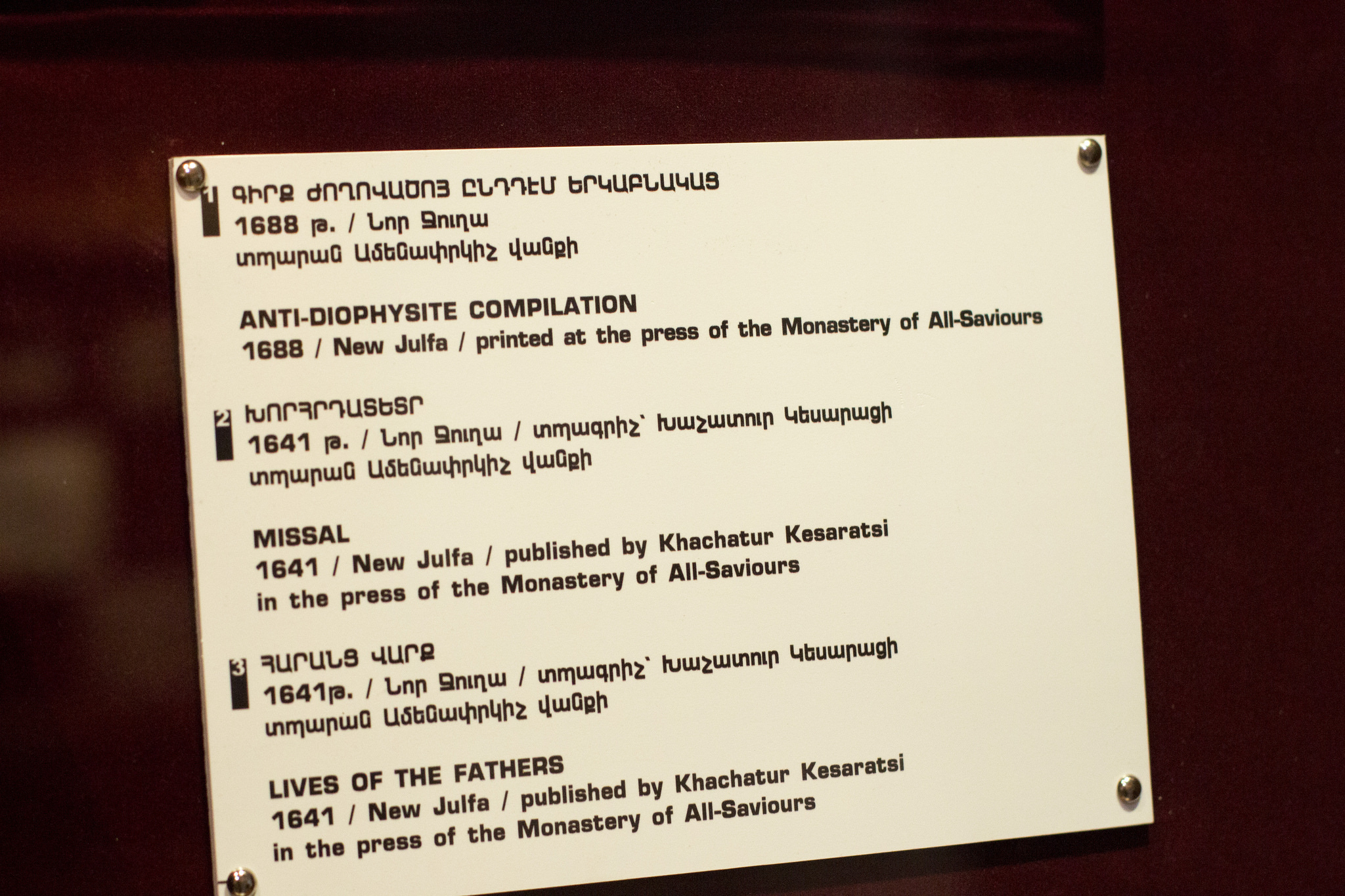
One of the places where the printing of Armenian books took place, was situated in New Julfa, the Armenian quarter of Isfahan, Iran. Khachatur Kesaratsi (1590-1646) was the most prominent leader of the Armenian community in the field of culture of New Julfa in the 17th century. In 1620 he was appointed as bishop an during his reign began the prosperity of educational work and the art of calligraphy in Amenaprkich (All Savors) Cathedral. Within 2 years they had produced matrices of 2 sizes, paper and decorative wood engravings. Four books were printed in the printing house established by Khachatur Kesaratsi, with Sagmosasaran (Psalter), printed between 1636 and 1638 among them. Unfortunately the museum in Yerevan doesn't have any copy of this book in their collection and the only known copy of the Psalter is now held at the Bodleian Library, Oxford (UK).
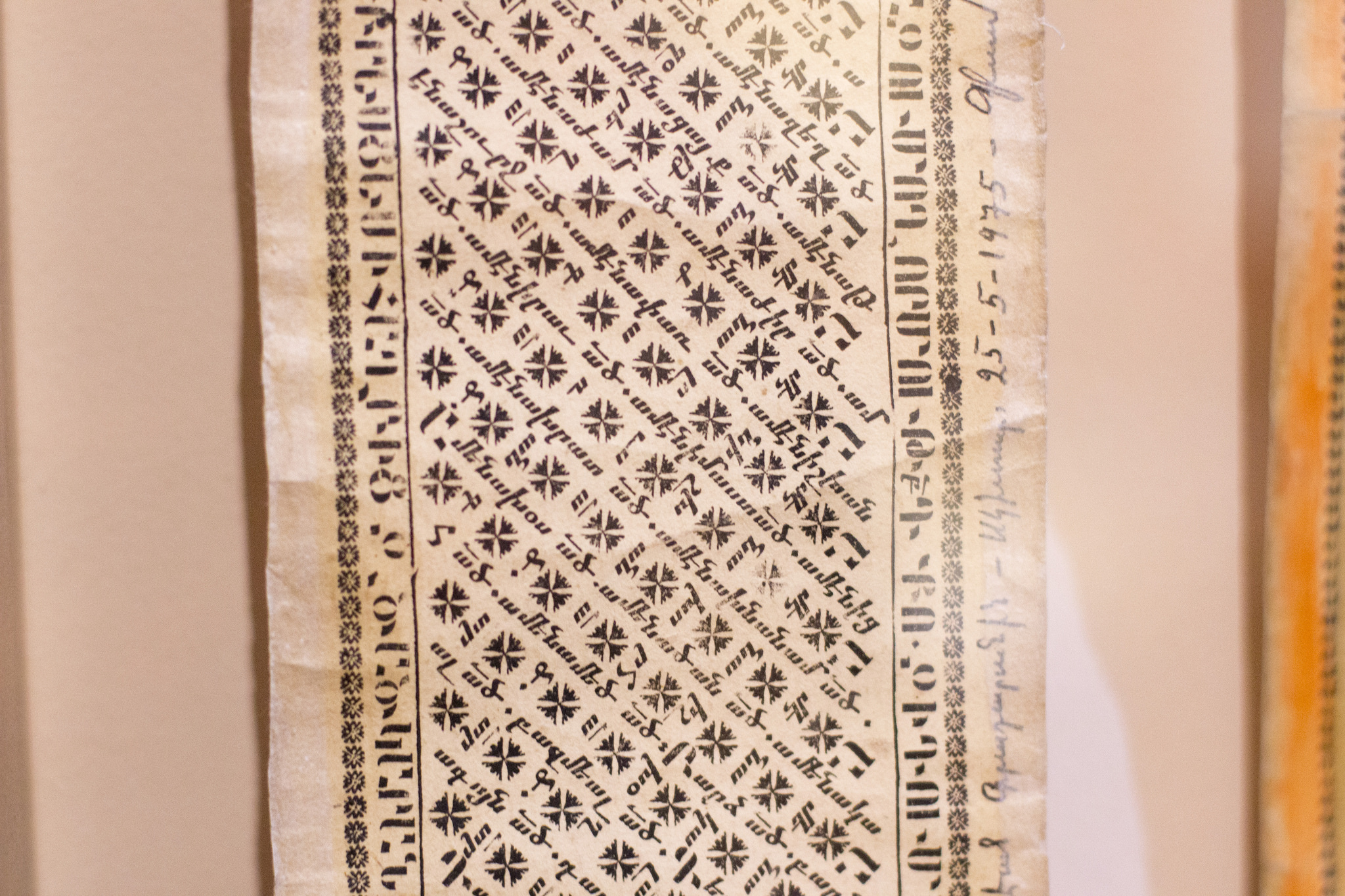
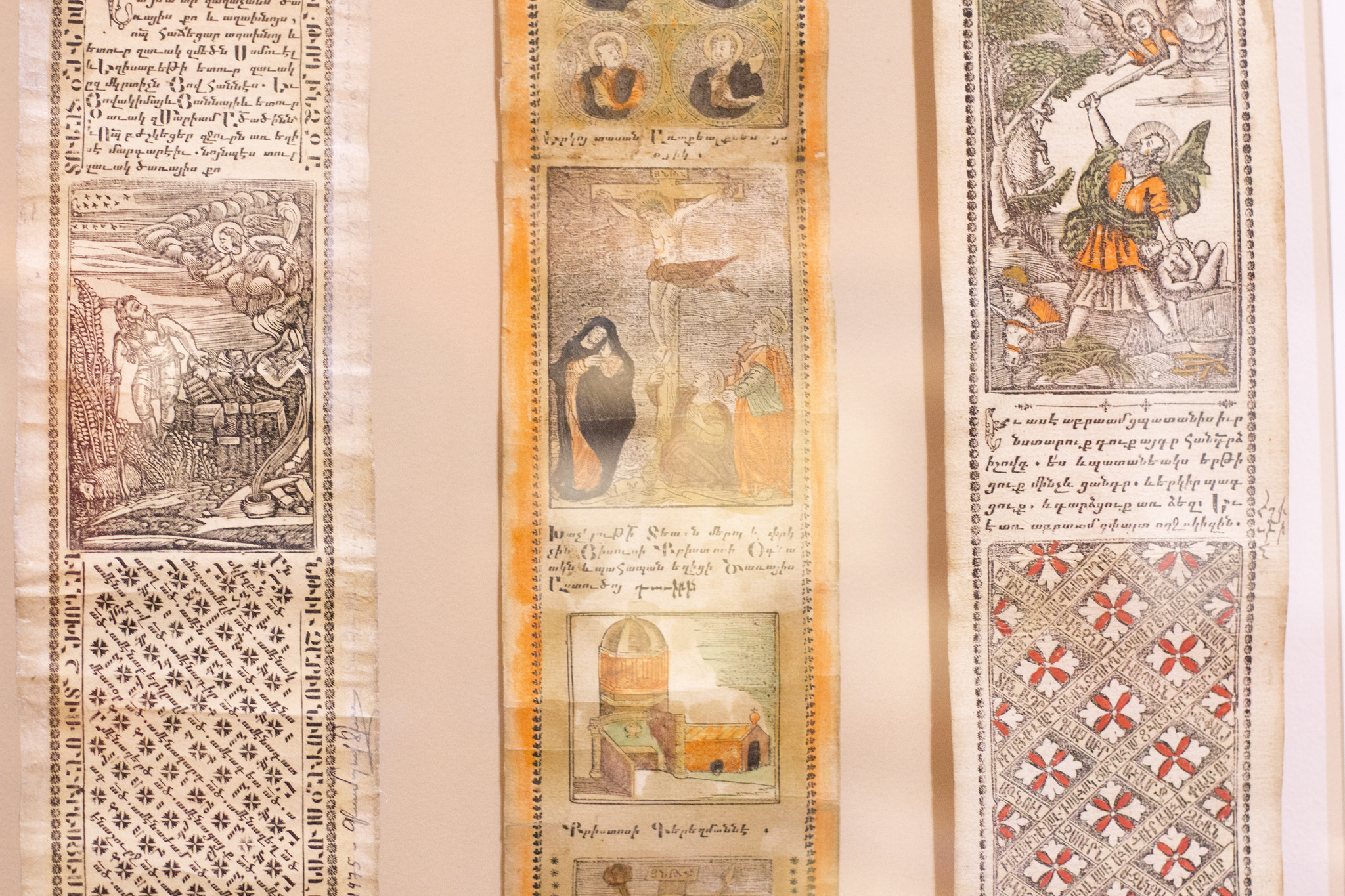
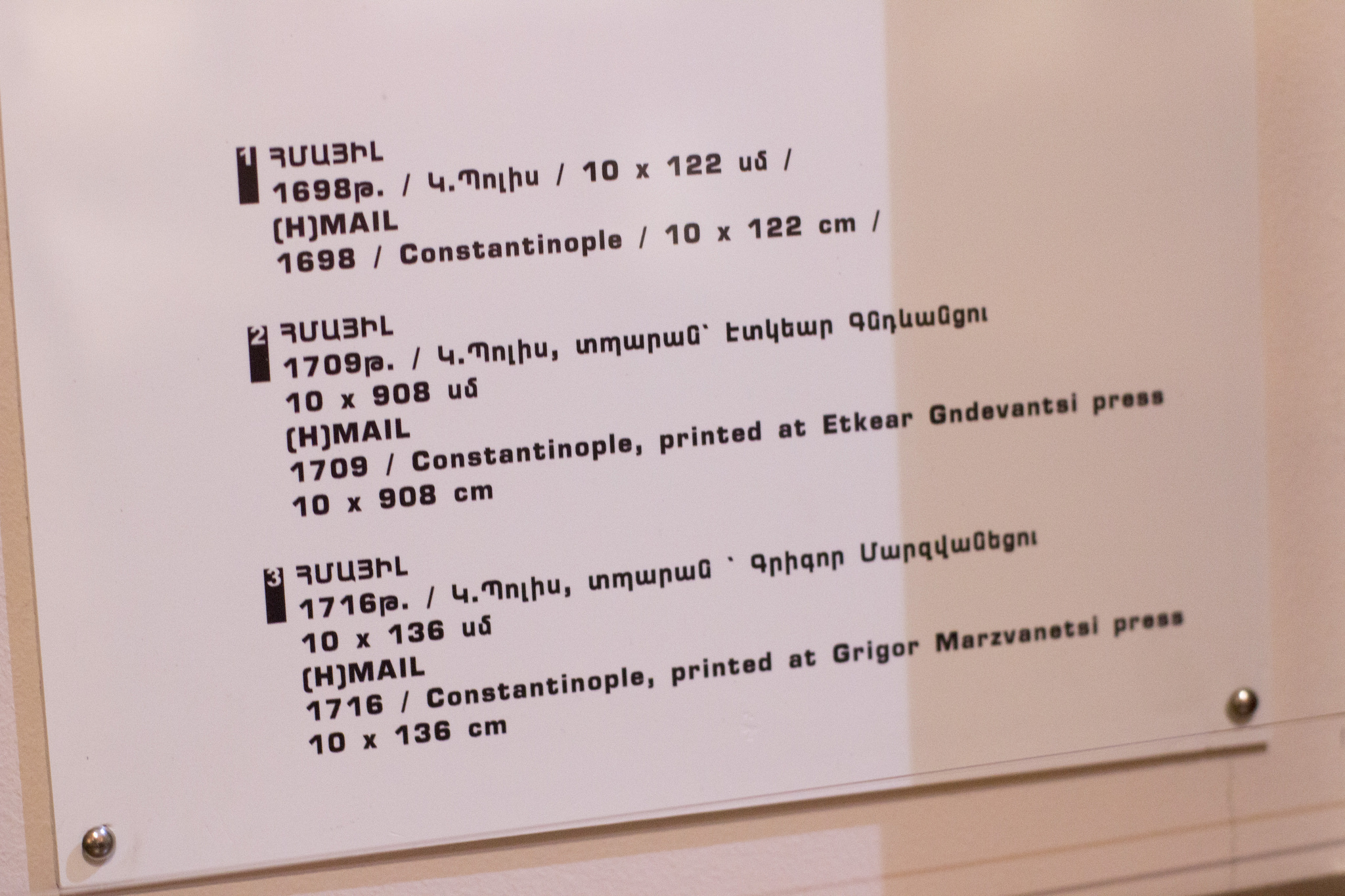
Intricate patterns composed from metal type and ornaments by manuscript illuminator Grigor Marzvanetsi who spent four year mastering the arts of printing and engraving, were printed in Constantinople in 18th century looked absolutely astonishing.
Lebanon was, and still is, one of the major points of Armenian printing. The first Armenian book printed in Lebanon - “The Summary of Christian Doctrine” - was published in 1894 at the “Hay Katoghike” (Armenian Catholic) printing house. The printing houses of the Armenian Catholicosate of the Great House of Cilicia (Vahe Stein, Seven, Tunisian, Shirak) have contributed greatly in the additional printing of Armenian books. Pieces from almost all Armenian classics and Soviet-Armenian authors have been published in the Lebanese printing presses and publishing houses. From 1894 to 2012, over 100 Armenian printing houses operated in Lebanon published more than 6500 book titles with print runs of more than 3,5 million copies.
Plaque outside the Monastery in the island of San Lazzaro in Venice (IT)
Book signed by Lord Byron, who was a great admirer of Armenian culture was also on display at the museum. He learned the Armenian language in Venice from the Mekhitarist Order, wrote substantially about the Armenian language and history, contributing to its improvement and translated ancient Armenian texts into English.
The first Armenian printing house in Armenia was established in Vagharshapat in 1771 and the first book was called «Զբօսարան Հոգեւոր» ("Zbosaran Hogevor", "Spiritual walking"). It was published in 1772 by Simeon I of Yerevan, the Catholicos of All Armenians.
I was expecting to see some examples of Armenian wood and/or metal type and printing presses, but there was not that much on display: one book press, manufactured in Russia, 2 offset presses, a few examples of metal type, cliche and no wood type at all.
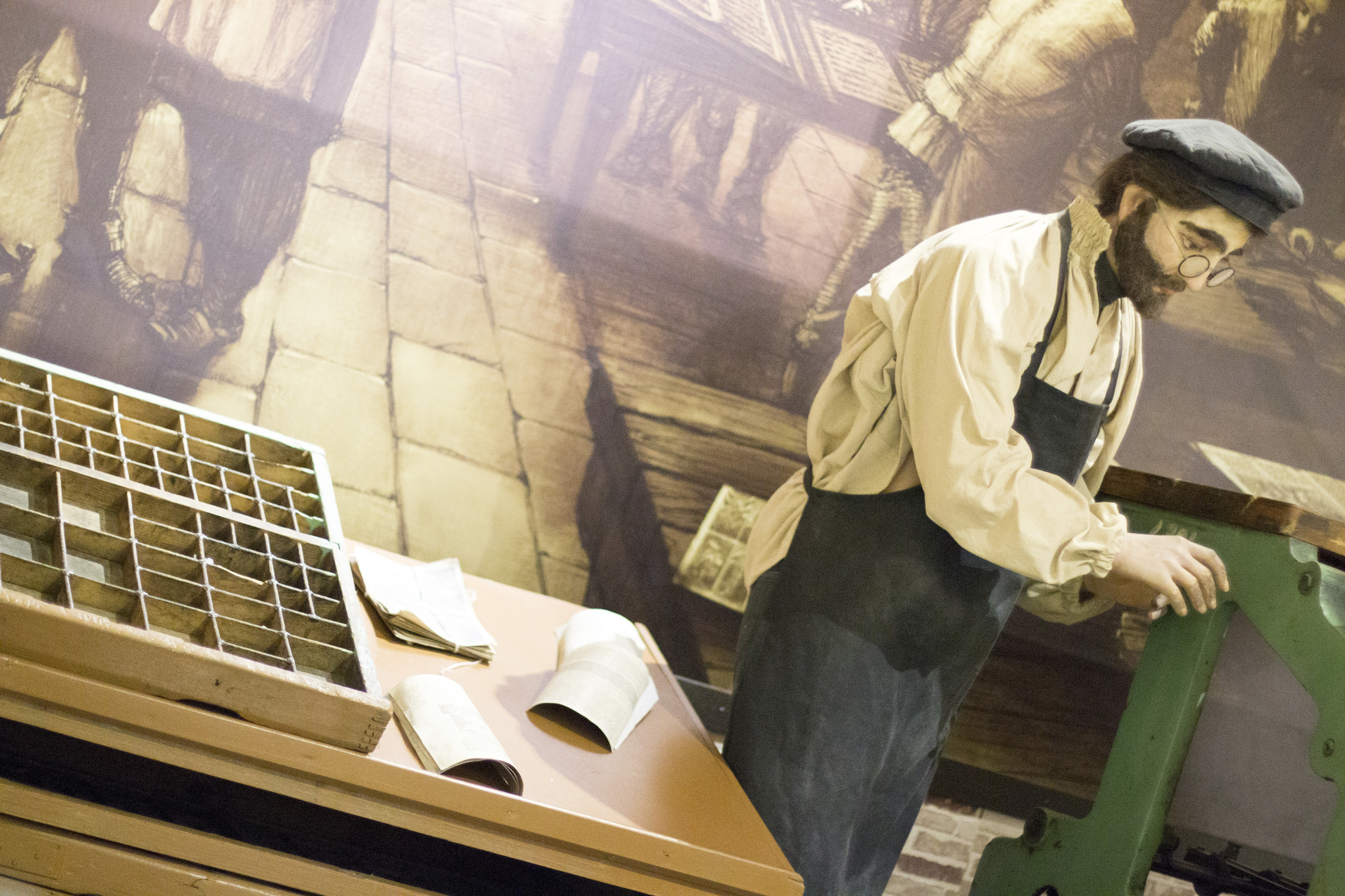
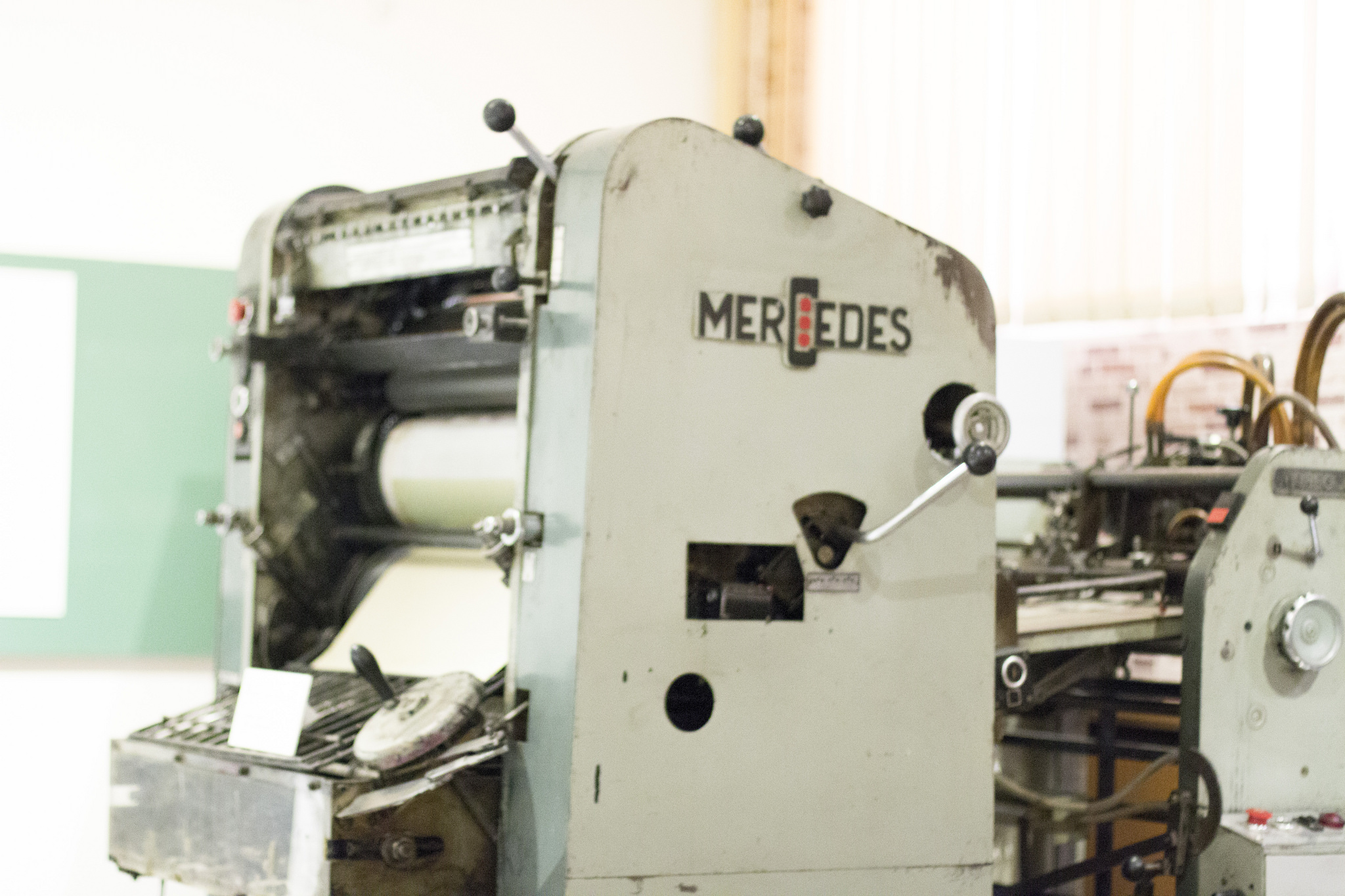
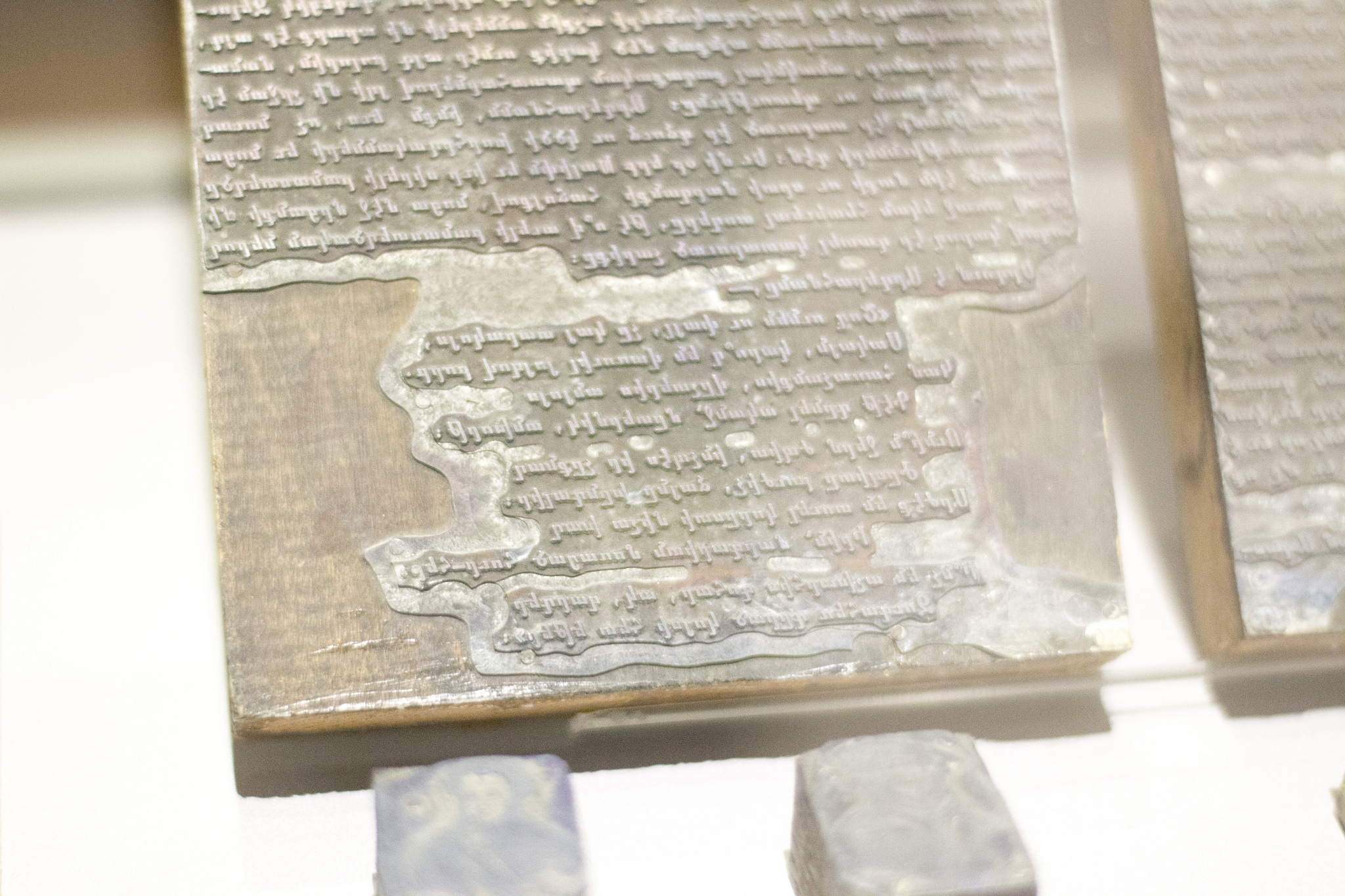
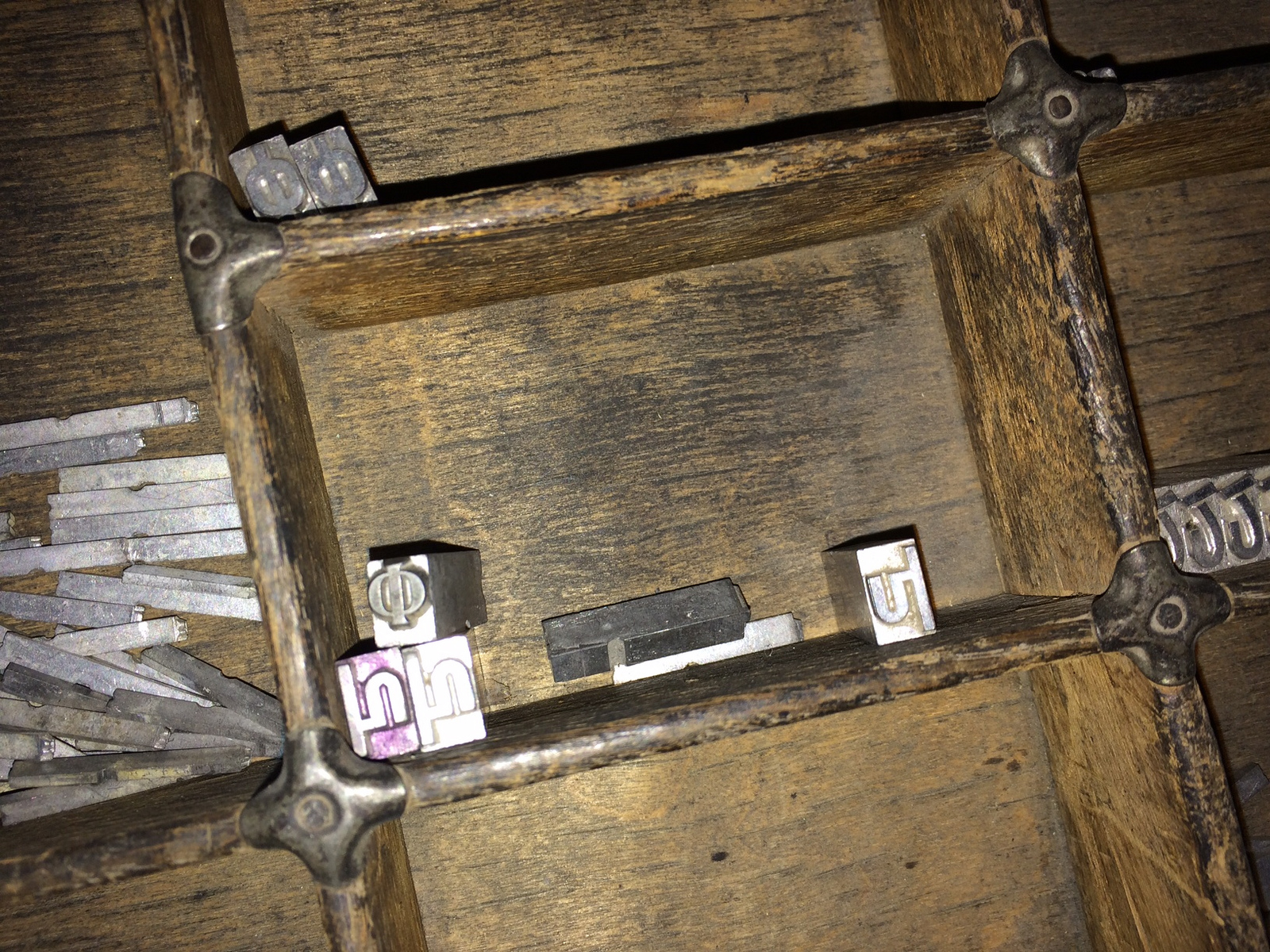
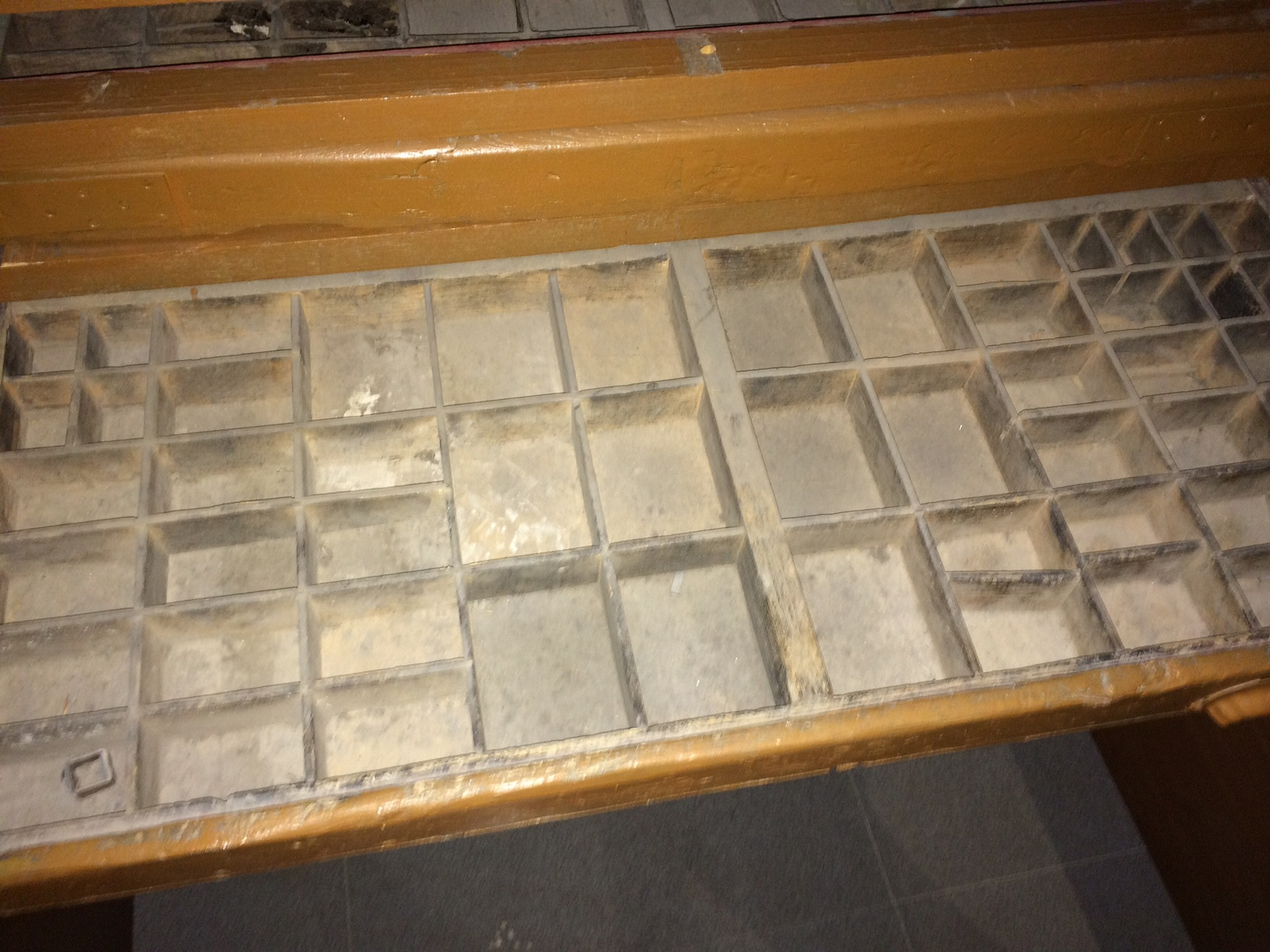
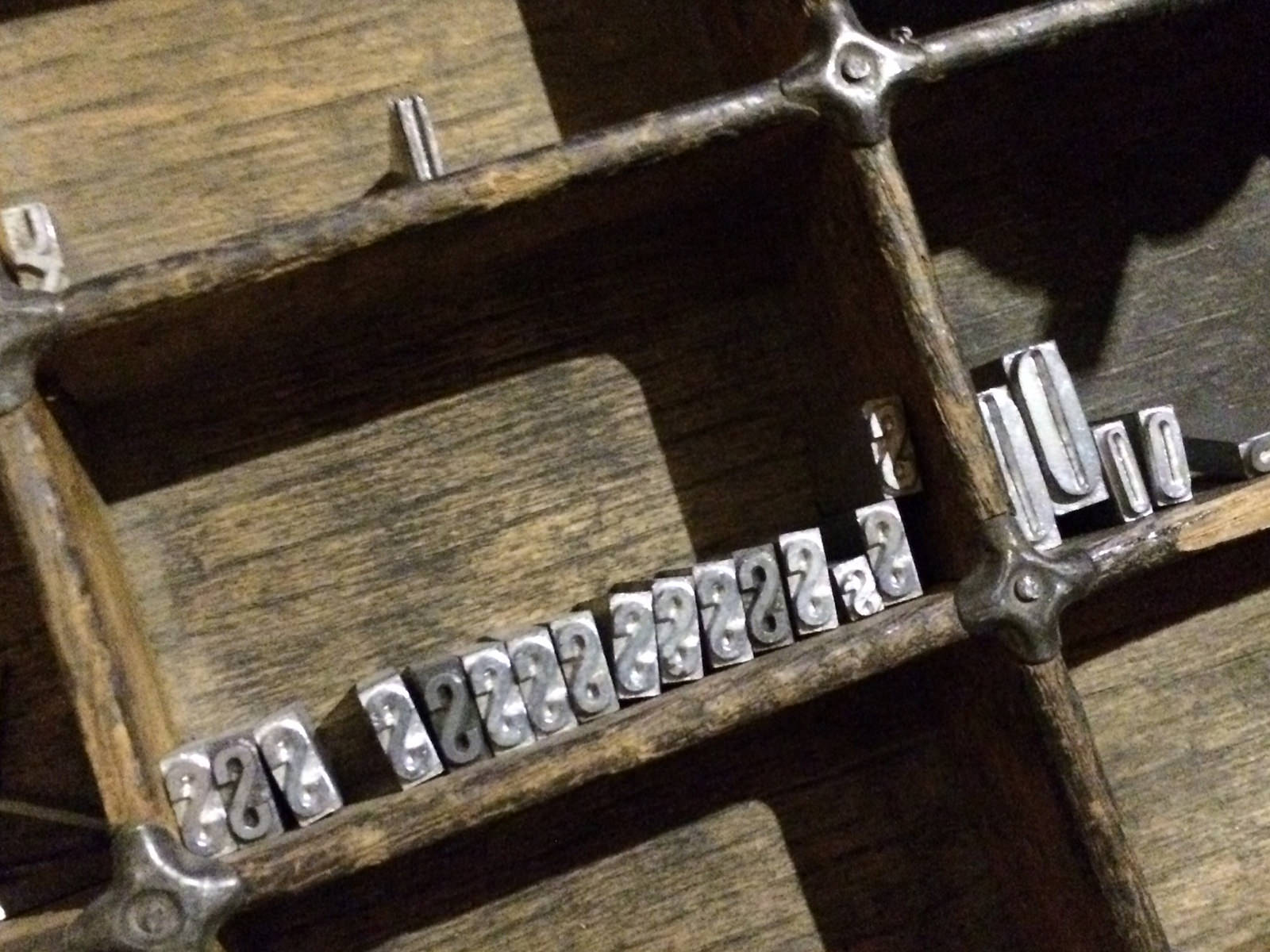
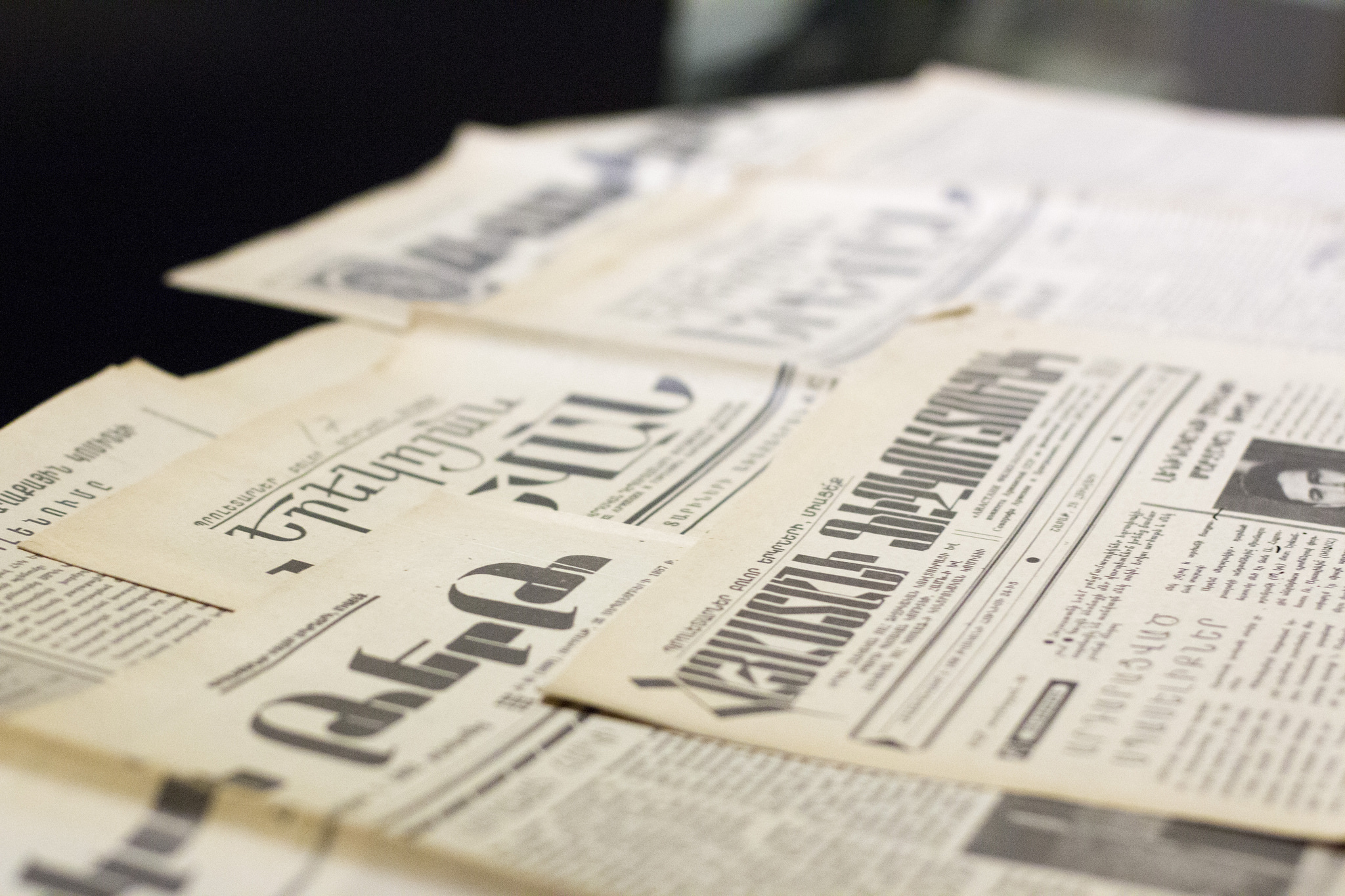
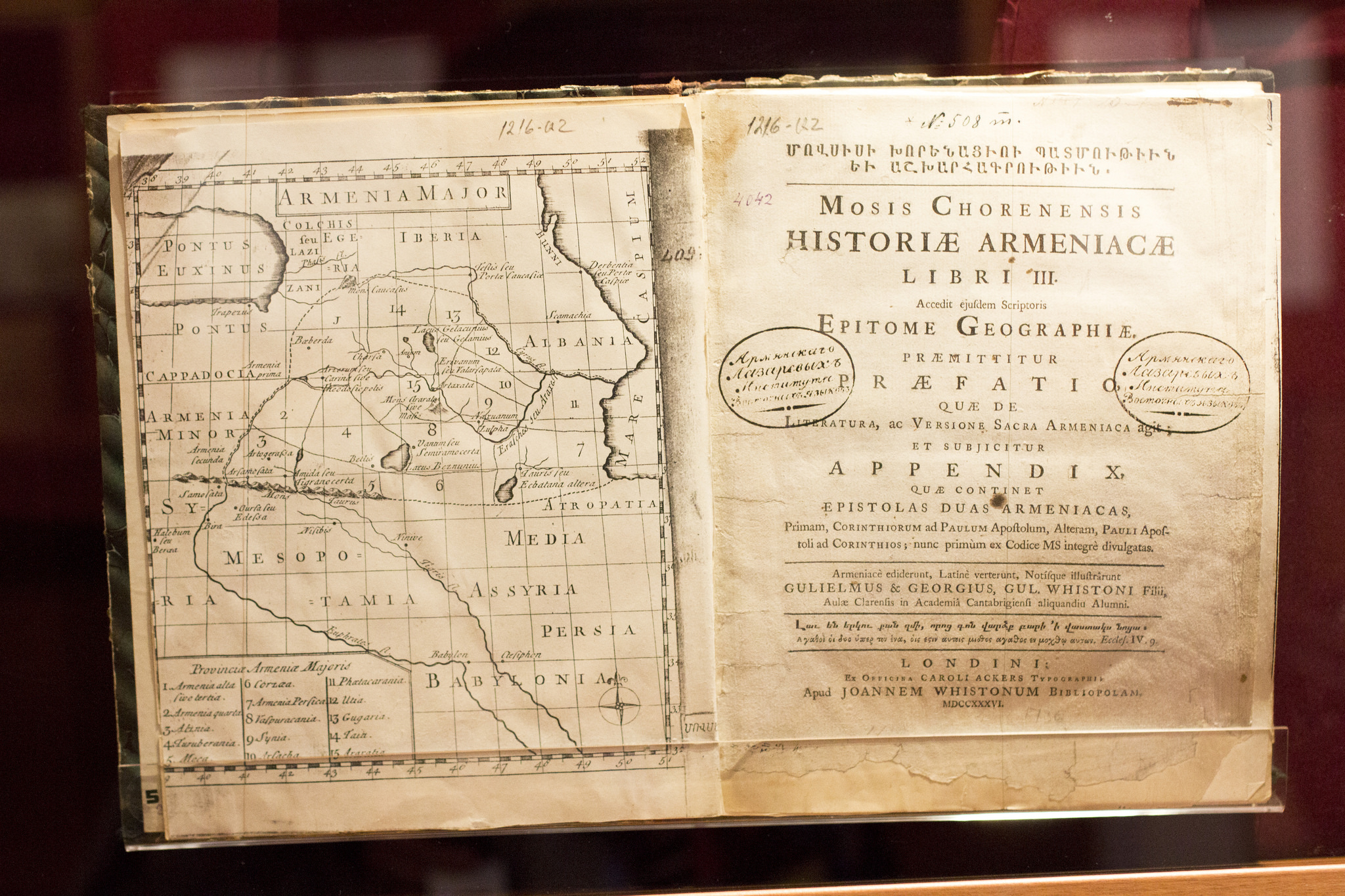
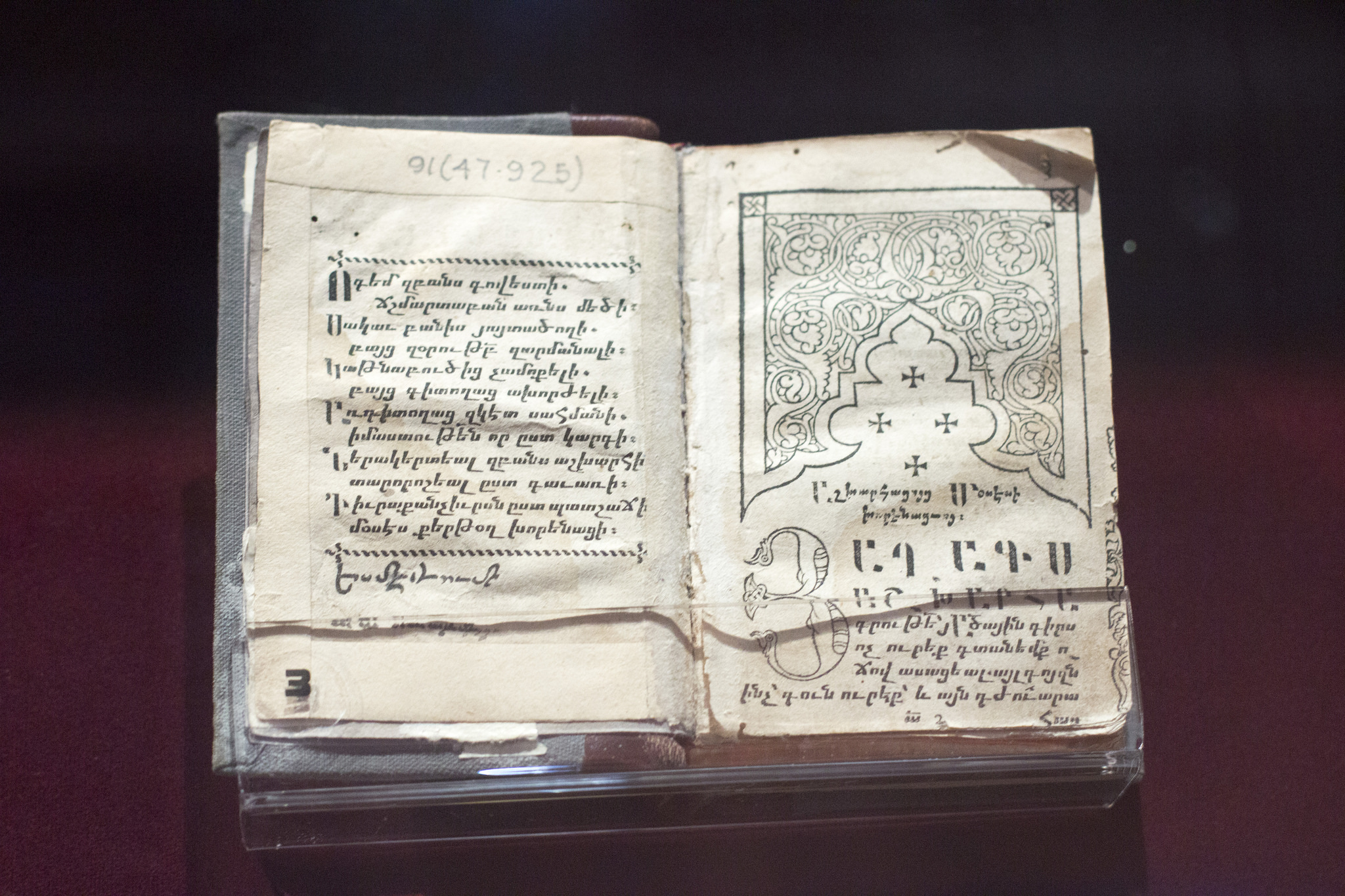
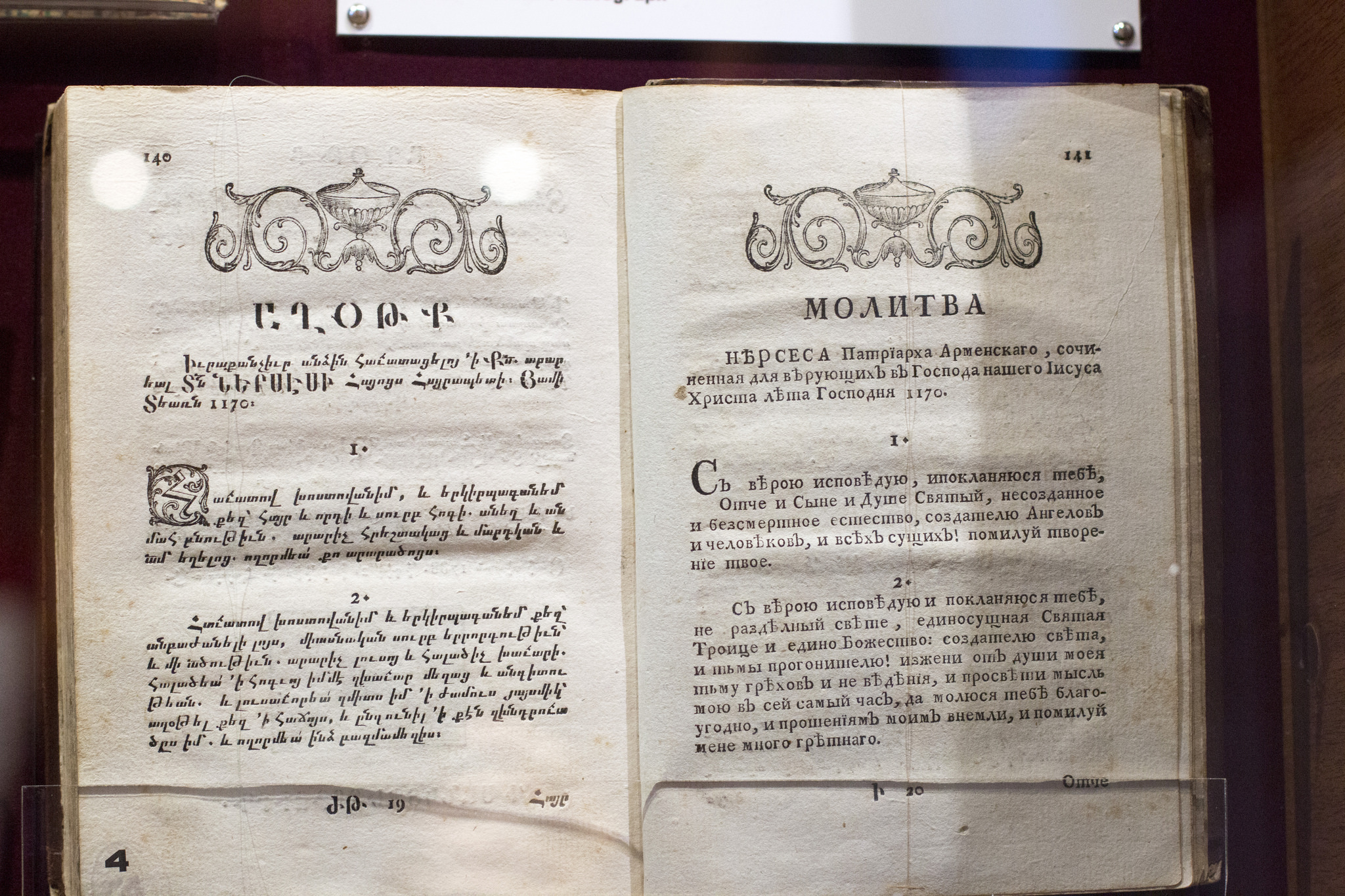
Although the Armenian books were printed in Bulgaria, Russia, France and England, the main centers of Armenian printing in the 19th century were in Constantinople, Venice, Vienna, along with the cultural centers of the Caucasus, Tiflis, Vagharshapat, Alexandrapol, Shushi and Yerevan.
The design of Armenian books in the 1920’s, clearly influenced by the European publications of that time, is linked to the famous poet Yeghishe Charents, who was the head of the art department at the Ministry of Education.
The was a stand with bilingual newspapers published in Armenia up till now, in Hebrew, Ukranian, Kurdish.
The National Library of Armenia created this Museum of Printing not only to present the rich collection the National Library has, but in order to show the importance of printing in Armenia’s history.
Check out the pictures of the museum.
you might also like
Granshan in pictures
Yerevan. Museum of Literature and Art.
Shakespeare's Sonnet n°38
Matenadaran. Yerevan 2015
“Ciao USSR” exhibition by Hayk Bianjyan. Yerevan 2015.
San Lazzaro degli Armeni
Visiting Yerevan in 2016, 2015 (1), 2015 (2)
Old Armenian printing blocks







